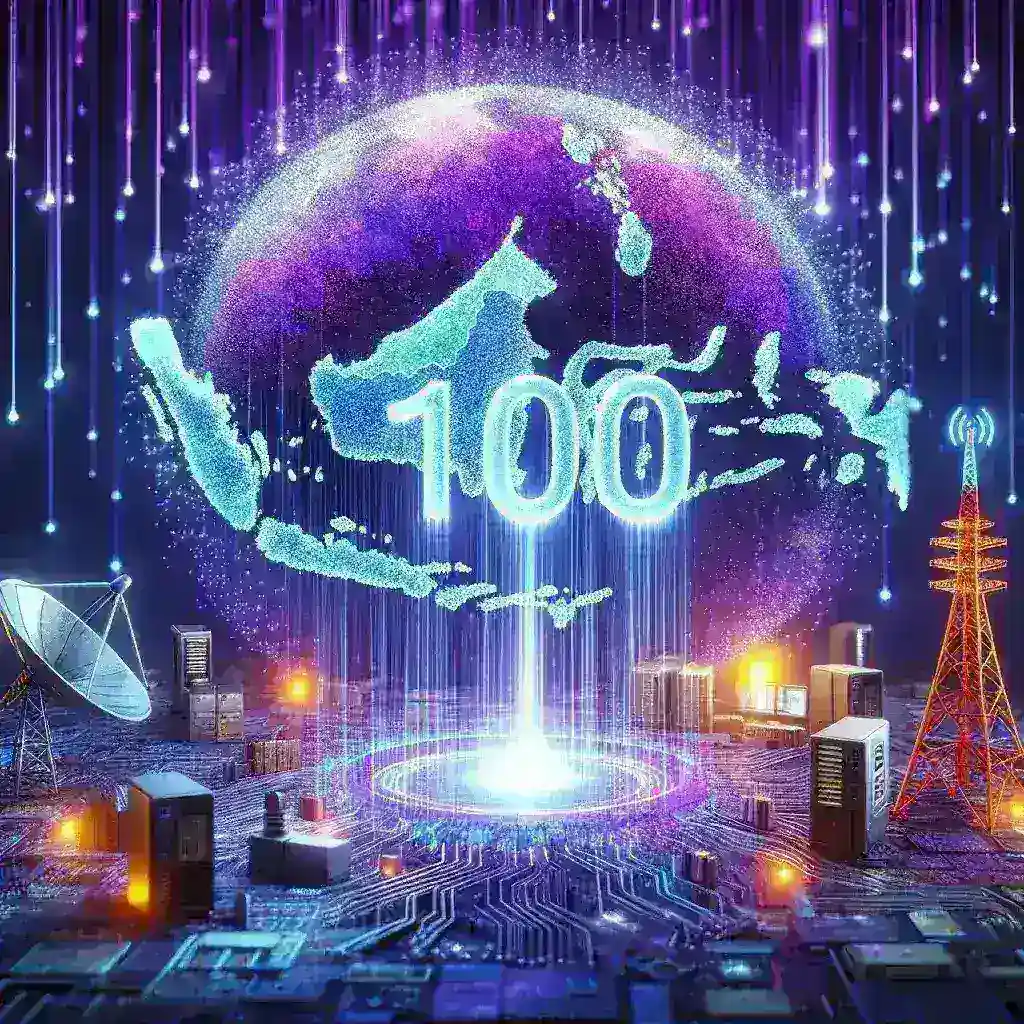Prabowo’s Bold Vision: 100 Mbps Internet for Indonesia
The recent statement by Prabowo Subianto, advocating for a significant upgrade to Indonesia’s internet infrastructure, aiming for nationwide 100 Mbps speeds, has sparked considerable debate within the telecommunications sector. While the aspiration is undeniably ambitious and potentially transformative for the nation’s digital economy, its realization presents a formidable challenge requiring careful consideration of various factors.
The current state of Indonesia’s internet infrastructure is a complex tapestry woven from advancements and limitations. While significant strides have been made in expanding connectivity, particularly in urban areas, vast disparities persist between regions. Rural areas often grapple with limited access, slow speeds, and unreliable connections, hindering economic development and social progress. Prabowo’s vision, therefore, necessitates a radical overhaul of this existing infrastructure, a task that demands substantial investment and meticulous planning.
Infrastructure Limitations: The Elephant in the Room
Achieving ubiquitous 100 Mbps internet access across Indonesia’s diverse archipelago presents a multifaceted logistical challenge. The sheer geographical expanse, coupled with the varied terrain and population distribution, complicates deployment. Laying extensive fiber optic cables across remote and challenging landscapes requires significant financial resources and logistical expertise. Furthermore, the existing infrastructure in many areas is outdated and inadequate, requiring substantial upgrades or complete replacement.
The cost of upgrading the infrastructure is a crucial element. The financial investment required for laying new fiber optic networks, upgrading existing equipment, and ensuring reliable power supply in all areas would be astronomical. Securing funding, whether through public investment, private partnerships, or a combination thereof, is paramount. The financial sustainability of such a large-scale project needs to be carefully considered, ensuring that the long-term operational costs are accounted for.
Technological Considerations: Beyond Fiber Optics
While fiber optic cables represent the gold standard for high-speed internet connectivity, their deployment alone may not fully address the challenges faced by Indonesia. Innovative approaches, such as leveraging satellite technology and exploring alternative wireless technologies like 5G, are crucial for ensuring widespread coverage, particularly in remote and sparsely populated areas where laying fiber optic cables is impractical or prohibitively expensive. The integration of these diverse technologies will require sophisticated network management and interoperability solutions.
Furthermore, the successful deployment of advanced technologies requires a skilled workforce capable of designing, installing, maintaining, and troubleshooting the complex systems involved. Investing in education and training programs to develop this specialized expertise is a critical element in ensuring the long-term success of Prabowo’s vision.
Regulatory Landscape: Navigating the Bureaucracy
The regulatory environment plays a crucial role in shaping the telecommunications landscape. Simplifying licensing procedures, streamlining bureaucratic processes, and creating a transparent and predictable regulatory framework can encourage private investment and facilitate the rapid deployment of infrastructure. A clear and consistent regulatory environment can foster competition, drive down prices, and improve the quality of service.
Conversely, overly complex regulations, unpredictable policy changes, and bureaucratic hurdles can stifle investment and hinder progress. A careful review and reform of the existing regulatory framework are necessary to ensure the smooth and efficient implementation of any large-scale infrastructure project. The government needs to foster a collaborative environment with private sector telecom companies to ensure successful implementation.
Digital Divide: Bridging the Gap
The digital divide is a significant obstacle to achieving nationwide 100 Mbps internet access. Socioeconomic disparities can limit access to technology, particularly in lower-income communities and rural areas. Addressing this divide requires a comprehensive strategy that includes affordability initiatives, digital literacy programs, and targeted interventions to ensure equitable access for all citizens. Without bridging this gap, investments in infrastructure alone may not translate into widespread benefits.
Initiatives such as public internet access points, subsidized internet access for low-income households, and targeted training programs can help bridge the digital divide and ensure that the benefits of high-speed internet reach all segments of the population. A holistic approach that considers both infrastructure development and digital inclusion is essential.
Expert Opinions: Cautious Optimism
Several telecommunications experts have expressed cautious optimism regarding Prabowo’s ambitious goal. While they acknowledge the potential transformative impact of nationwide high-speed internet, they also emphasize the significant challenges involved. The consensus is that achieving 100 Mbps speeds across the entire country requires a multi-pronged approach, involving substantial investment, technological innovation, and effective policymaking.
Many experts stress the importance of collaboration between the government, private sector telecommunication companies, and international development partners. A collaborative approach fosters the sharing of knowledge, resources, and expertise, allowing for a more efficient and effective implementation of the project. Open communication and transparency are crucial for building trust and ensuring the project’s success.
Sustainability and Long-Term Vision
The long-term sustainability of any major infrastructure project is paramount. The project’s financial viability, environmental impact, and social implications must be thoroughly assessed and mitigated. Sustainable practices, such as utilizing renewable energy sources for powering infrastructure, are crucial for ensuring the project’s long-term environmental sustainability. Furthermore, measures must be in place to ensure that the project benefits all stakeholders, including local communities and the environment.
In conclusion, Prabowo’s vision of achieving 100 Mbps internet speeds across Indonesia is undeniably ambitious but not impossible. The challenges are immense, requiring significant investment, technological innovation, effective policymaking, and a collaborative approach involving all stakeholders. However, the potential rewards—enhanced economic growth, improved social inclusion, and strengthened national competitiveness—make the pursuit of this ambitious goal a worthy endeavor. Success will hinge on a well-defined roadmap, meticulous planning, and a steadfast commitment to overcoming the numerous hurdles along the way. The journey towards a digitally connected Indonesia requires a long-term perspective and a commitment to sustainable practices.
For further insights into Indonesia’s telecommunications landscape, you may wish to consult reports from reputable organizations like the International Telecommunication Union (ITU) or GSMA.

